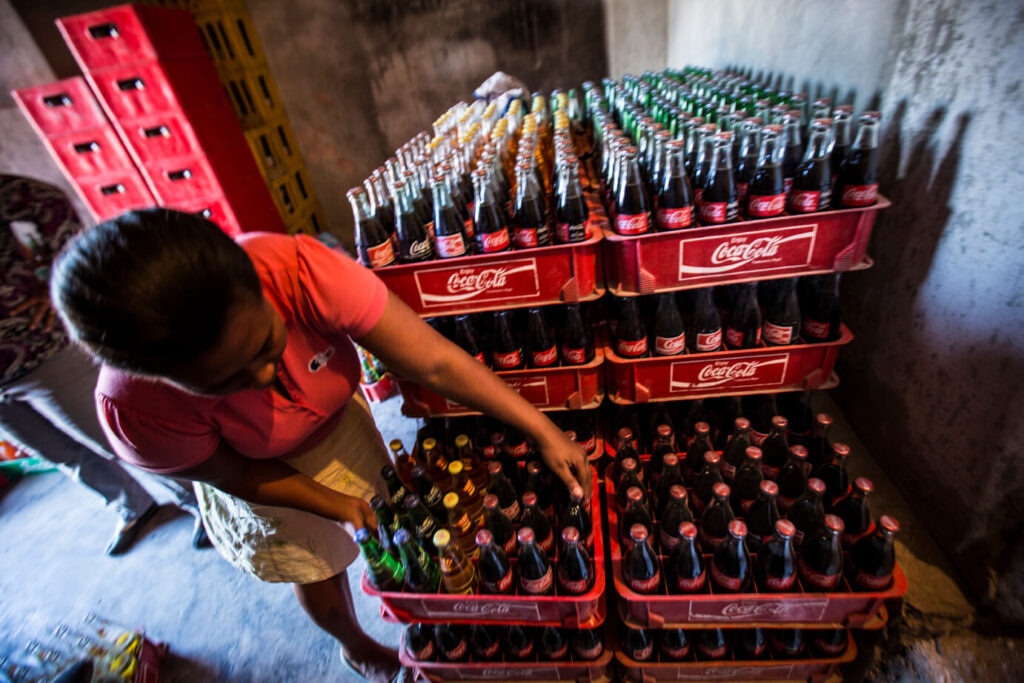
The coronavirus pandemic is changing business as we know it and sending a domino effect rippling through every aspect of our lives. And, as always during global crisis, the world’s most vulnerable will suffer the greatest consequences. As many as 400-600 million people worldwide could be forced back into poverty as a result of this pandemic. Because global supply chains connect millions of organizations of all sizes around the world, the fate of the most vulnerable is inextricably linked to the fate of larger businesses.
Small and microbusinesses can constitute up to half of revenues for the largest consumer goods companies. To maintain business continuity, these manufacturers must extend stability out to the furthest edges of their supply chains to the end-merchants who are essential to their communities. However, COVID-19 pandemic-related lockdowns and disruptions in inventory delivery have led to sporadic sales, which severely harm these microbusinesses. They are facing a severe liquidity crunch that threatens to shutter their doors and are in immediate need of funds to stabilize their inventory and keep their lights on.
Supply chains offer one of the most realistic means of extending funds in the short-term. Getting funds to the microbusinesses that need them most requires a collaboration of unlikely partners: financial service providers (FSPs) that serve micro and small businesses and major brand manufacturers. These manufacturers possess sales history data that is relevant to risk modeling and supply chain relationships, and that allows them to build awareness and onboard users of supply chain finance products.
Action plan for lenders to initiate liquidity lending to micro and small enterprises
Lenders to micro and small enterprises in emerging markets already operate on thin liquidity margins and depend heavily on timely repayments and deposits. As more microenterprises are unable to repay loans during this time, lenders are feeling additional pressure on liquidity and are being forced to rationalize funds. One way to do this is for lenders to establish an explicit supply chain financing practice designed to channel funds to the moving of supplies and goods. Financial service providers who want to start offering a supply chain finance product to micro and small businesses should consider the following:
What supply chains do your current customers belong to?
Conduct a quick segment analysis of the businesses you serve by grouping customers by industry and region. You can supplement existing customer data with additional information gathered through phone calls and texts. Potential segments may include merchants of consumer goods, pharmaceuticals, agriculture production and processing, and more.
Our partner CD Finance in China did a quick analysis of their customer base and found that while their clients in the service industry were forced to shut down during the lockdown, those in the crop-planting business— which provides essential products— were able to continue operating. When considering a supply chain product, FSPs should prioritize segments that work within supply chains that provide the most essential goods to communities.
What relationships can you leverage to form supply chain partnerships?
Suppliers with important purchase data that can be used to assess risk are critical partners for supply chain finance solutions. As a next step, conduct research to determine your customers’ top suppliers. Small merchants often have a dozen or more supply sources. Look for commonalities and propose partnerships with three to five of the most common suppliers to get short-term financing out to merchants using the suppliers’ historical purchase data. The supplier will benefit from such an arrangement through greater sales and turnover stabilization. CD Finance collaborated with a national agricultural inputs supplier to form a partnership and was able to negotiate a group price and secure a quality guarantee and support services for farmers.
Lenders should determine if they are serving any of the top suppliers within their own clientele. For example, a financial institution may have one part of the lending operation focused on smallholder farmers and a separate part of the business serving an agribusiness. By bridging these two groups, an organization can expedite the introduction of a cross-customer solution like supply chain finance.
How do you model risk?
Cash flow-based risk models examine merchant purchasing and sales history patterns to discern their ability to acquire stock. To develop an effective cash flow-based risk model, FSPs should work with suppliers to isolate key products that can serve as proxies for determining overall turnover. This will provide an initial risk assessment that can then be calibrated. Once they have begun lending and refined the risk model, lenders can expand their scope to serve clients in other segments.
Are you preparing for long-term solutions?
When addressing the immediate need of getting liquidity to merchants now, it’s important to keep in mind this won’t be the last major disruption. Natural disasters, climate change, and the potential for future pandemics mean that practices put in place now can mitigate the profound challenges of the future. Digitizing supply networks and supporting the flows of information and funds they require will provide the transparency manufacturers need to better manage risk and create more adaptable supply chains. In better times, it will also bolster greater efficiencies and revenue growth. Opening data flows to lenders will further increase supply chain stability and growth.
Accion is working with manufacturers and lenders to build business models that extend supply chain finance to the last-mile merchant by structuring key partnerships, fully mapping supply chains, leveraging data flows to ensure robust risk assessment, designing solutions that meet the immediate needs of microentrepreneurs, and building client engagement. This approach ensures that the businesses at the end of the supply chain will have what they need to manage the ebbs and flows of consumer demand and can continue providing the essential goods their communities need.